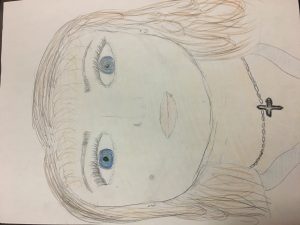The pair of scholarly and non scholarly readings I enjoyed most this year in ASTU were Couser’s article, Rhetoric and Self-Representation in Disability Memoir, paired with “Cockeyed” by Ryan Knighton. Couser’s article covered different rhetorics of disability and how they are presented in autobiographies. I found this very interesting as it allowed me to think more about the disabled in the community. My education had not exposed me to much information about the disabled, which may be due to the fact that, “people with disabilities have been excluded from educational institutions and thus from economic opportunity….[ and…] they will be less likely to produce… [a] success story” that would lead to them writing an autobiography (Couser 31). Retrospectively, I found the fact that they were “excluded” in the educational sphere to be somewhat true in my elementary and middle school experience as any kids with any form of noteable disability were placed into a separate class and segregated from the rest of the children. Therefore, reading Couser’s journal article and then reading “Cockeyed”, a story of a man slowly going blind, was really enlightening for me. The fact that “Cockeyed” was the first autobiography I had read written by a person labeled as “disabled” was very concerning and intriguing for me. Couser asserts that there is a lack of life narratives in this category, perhaps due to the fact that “disability may disqualify people from living the sorts of lives that have traditionally been considered worthy of autobiography” (Couser 31). Reading this quote really unsettled me and made me reflect on both what I spend my time reading, and the meaning of this injustice. The disabled are clearly marginalized within society and Couser makes it clear that they have a difficult time producing their narratives and making their voice be heard. “Cockeyed” did an exemplary job of expressing Knighton’s feelings while going blind as well as presenting what he thought of society’s way of dealing with his newfound difference. These two pieces of writing were thought-provoking for me and widened my lens in terms of scholarly knowledge and perspective on disability. In the future I hope not only to educate myself more on the topic of disability and their representation in society and the literary world but also to find more scholarly work on the narratives’ significance and issues.
Works Cited
Couser, G. Thomas. Signifying Bodies : Disability in Contemporary Life Writing. University of
Michigan Press, 2009. Web. 8 Apr. 2017.
Knighton, Ryan . Cockeyed . 1st ed. New York: Public Affairs , 2006. Print.
